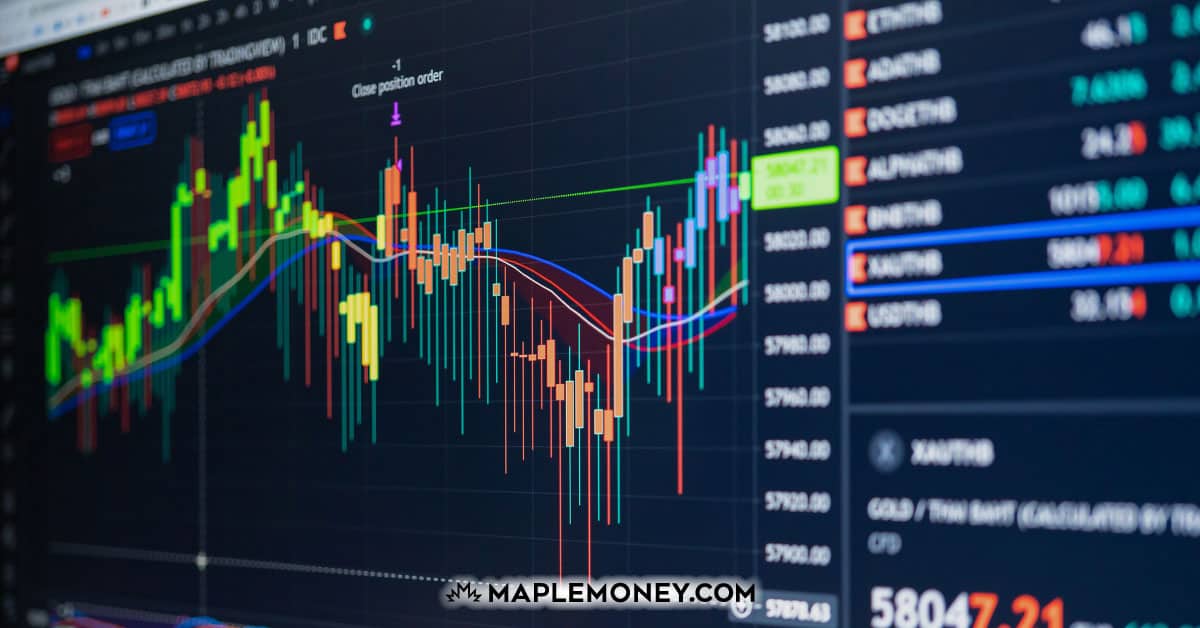Market Order vs Limit Order: Understanding the Differences

When you buy or sell a stock, you can place two main orders: market orders and limit orders. Each one has its advantages and disadvantages. To help you better understand how market and limit orders work, and when you should use one over the other, I’ve put together the following guide. My hope is that it will give you more confidence when you buy or sell a stock.
What Is a Market Order?
A market order accepts the “market price” at the time the order is placed. The person trading has no control over the price they receive. Simply put, it’s the best possible price at the moment the trade is executed. When a market order is placed, the priority tends to be speed over price.
What Is a Limit Order?
A limit order is an instruction to execute a trade only at a specific price or better. The trader is less concerned with quick order and is looking for the best possible price. A limit order places more control in the hands of the person buying or selling
When Should You Place a Market Order?
A market order can make the most sense in the following three instances:
- You only have a few shares to trade. Unless you’re trading hundreds or thousands of shares, the difference between the market price and the price you might get by placing a limit order shouldn’t affect your bottom line all that much.
- Large-cap stocks. If you’re trading a large-cap stock, like a bank or large telco company, prices don’t fluctuate all that much, and the bid and ask prices should be very close. This might not be true of a small-cap or penny stock.
- You have to buy or sell a stock quickly. If you need liquidity now regardless of the market price, you’re better off placing a market order.
When Should You Place a Limit Order?
Here are a few situations when a limit order may be the most suitable:
- You have time to wait for the best price. You know what your ideal price is. If you don’t need the money instantly, a limit order can ensure you get the price you want. Just be prepared to wait.
- You have to sell a lot of shares. If you have thousands of shares you need to sell, there’s a risk to placing a market order because you have no control over the price. It’s worth your time to use a limit order in this situation.
- You want to sell for a specific price. Providing you can wait, a limit order will let you sell at the price you want.
- You’re selling a less liquid stock. If the stock you’re selling trades in lower volumes like a small-cap or penny stock, the bid and ask prices vary wildly. To control your selling price, you’re better off using a limit order.
- You want to buy at a specific price. Limit orders aren’t only for selling stock. If you are buying and can wait until the stock is at a particular price, a limit order gives you that control.
Disadvantages of Market Orders
Market orders can be very convenient, but they also have their downsides. In the following situations, you might want to avoid using one:
- You are outside trading hours. If you place a market order during the evening or on the weekend, when the markets are closed, you will be subject to the market price when the exchange reopens. News from global markets that trade in different time zones can cause prices in North American markets to swing wildly at the start of the day.
- You want to buy or sell for a specific price. If getting the right price is your number one priority, you should not use a market order, plain and simple.
Disadvantages of Limit Orders
Limit orders give investors a lot of control, but they don’t work for all situations. Here are some examples of when you should not use a limit order.
- You may never get your price. Let’s say Company ABC is trading at $47 per share, but you wish to buy it when the price drops to $42 per share. What if you never reach your limit price? You won’t fill your limit order, and you will have to decide how badly you want the shares.
- You have to keep track of limit orders. Depending upon how active a trader you are, you may lose track of the limit orders you’ve placed. Think of it as a queue. You can decide how long a limit order will last, up to several months. You need to check in on the status of your limit orders frequently to prevent an unexpected trade from going through.
Placing Market Orders and Limit Orders with an Online Broker
These days, most investors buy and sell stocks in a discount brokerage account, also known as an online broker. Examples of online brokers in Canada include bank brokerages like TD Direct Investing or Scotia iTrade, and several highly-rated independent brokers, like Questrade or Wealthsimple Trade.
Online brokers can handle any order type, including market and limit orders. When you are on the trading screen, you will specify which order you wish to place. In the case of a limit order to sell or a limit order to buy, you’ll need to determine how long you want your order to remain in place. A market order is executed instantly.
Final Thoughts on Market Order vs. Limit Order
As order types, market orders and limit orders often contrast one another. When a market order makes sense, a limit order doesn’t, and vice versa. That’s the nature of stock orders. If you were previously unfamiliar with market and limit orders, take a few minutes to log in to your brokerage account and look at the trading screen to find out how to program each type of order.

